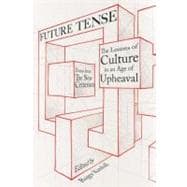
What is included with this book?
| Introduction | p. viii |
| America Resumed: 9/11 Remembered | p. 1 |
| Is America Periclean? | p. 21 |
| A Prometheus Bound | p. 41 |
| America & the Angels of Sacré-Caeur | p. 61 |
| Everybody Gets Rich | p. 81 |
| Under the Scientific Bo Tree | p. 101 |
| What's a Museum? | p. 119 |
| Enter Totalitarian Democracy | p. 141 |
| Out of the Wilderness | p. 161 |
| The Fourth Revolution | p. 181 |
| The Lessons of Culture | p. 201 |
| Contributors | p. 219 |
| Index | p. 223 |
| Table of Contents provided by Ingram. All Rights Reserved. |
The New copy of this book will include any supplemental materials advertised. Please check the title of the book to determine if it should include any access cards, study guides, lab manuals, CDs, etc.
The Used, Rental and eBook copies of this book are not guaranteed to include any supplemental materials. Typically, only the book itself is included. This is true even if the title states it includes any access cards, study guides, lab manuals, CDs, etc.